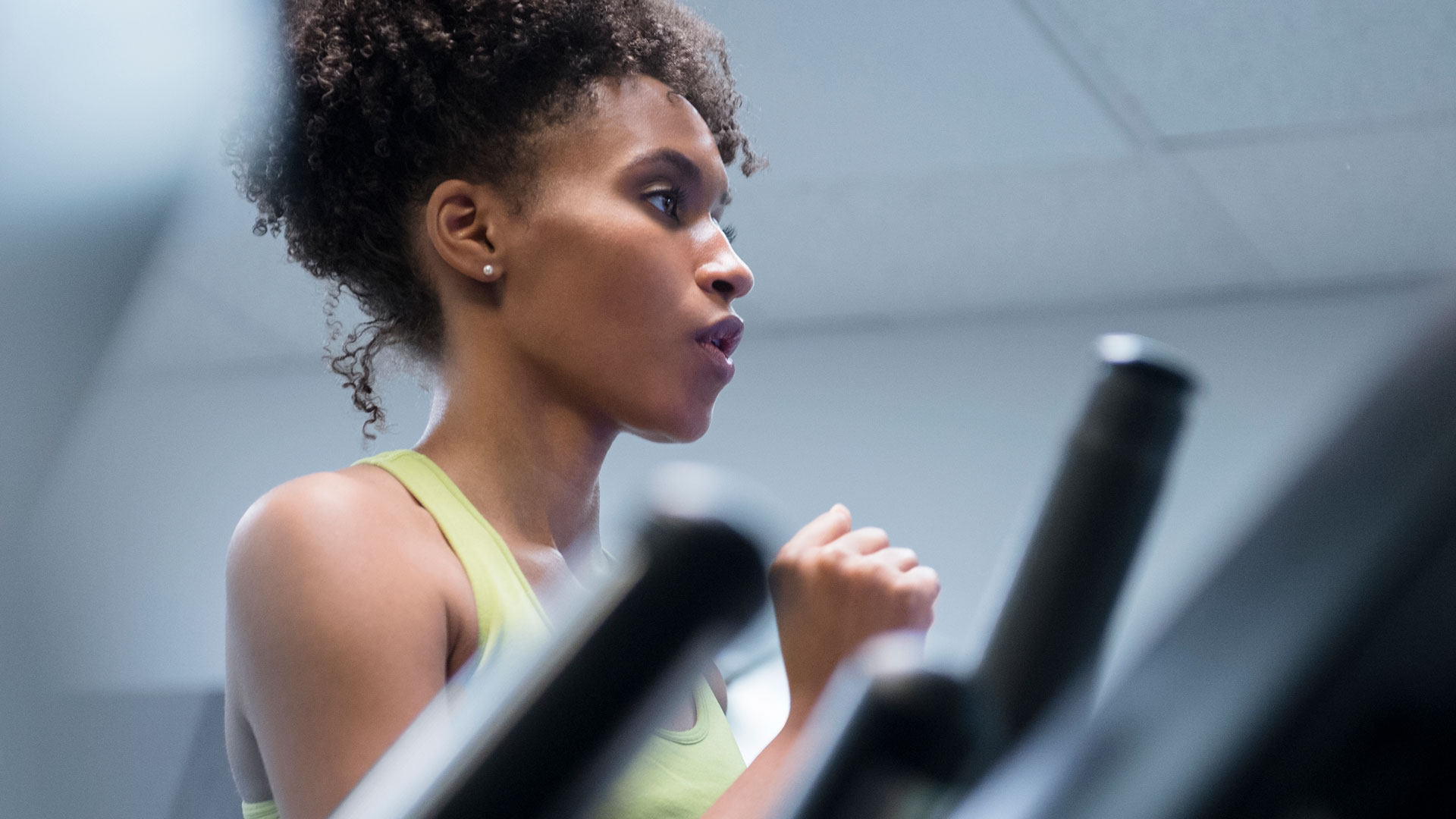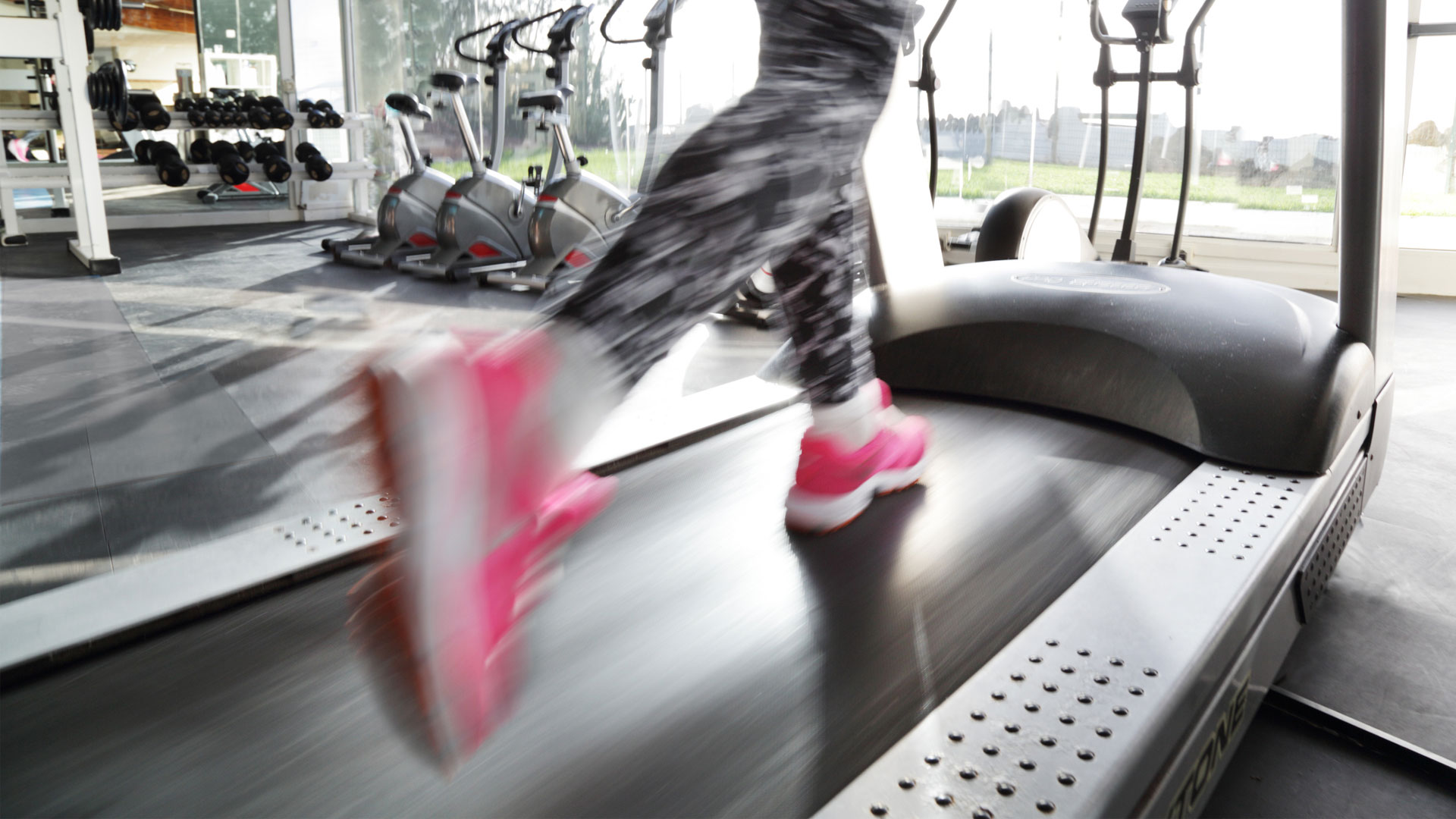How to increase lung capacity
We asked the experts how to increase lung capacity so that you can breathe easier during exercise.

Whether you’re reaching the summit of a mountain or coming to the end of a HIIT class, most of us will feel puffed out during exercise. You might have wondered how to increase lung capacity so that you can keep going during particularly difficult sets.
It’s possible to tone your muscles and sculpt your body, but can you give your lungs an upgrade too? Science has proved that not smoking and doing regular exercise will help keep your lungs healthy and strong, but will doing a HIIT class or powering through a run on one of the best treadmills in your home gym help you increase your lung capacity? Read on as Live Science asked the experts if the feat is possible.
How to increase lung capacity
Lungs are spongy, air-filled organs that lie on either side of your chest. They take oxygen from the atmosphere, pass it into your bloodstream and then expel the waste gas (carbon dioxide) that the body doesn’t need. They belong to every human's respiratory system.
However, the amount of air that a pair of lungs can contain actually differs from person to person, pulmonologist Dr. Andrew Martin of the Deborah Heart and Lung Center in New Jersey told Live Science. "Lung capacity changes with age and height, so there is no one normal number for lung capacity," said Martin. "Normal lung capacity should be enough to bring oxygen to the blood and eliminate carbon dioxide from it. You should be able to increase your breathing enough so that, even with heavy exercise, you should only be using about 70% of your maximum voluntary ventilation."
Experts can measure your normal lung capacity in several ways, said Dr. Martin. This includes FEV1, where the amount of air you can exhale forcefully in one second is measured; Vital Capacity, which is the amount you can exhale after breathing all the way in and Maximum Voluntary Ventilation (MVV), the maximum amount of air you can move and out of your lungs by breathing in and out as fast as you can over 15 seconds.
Researchers from the University of Belgrade studied which sports improve lung function the most, finding that basketball players, water polo players and rowers scored the highest in FEV1 and MVV tests. This led them to believe that the training used in these sports could have the potential for improving pulmonary function and rehabilitation.

Lung capacity doesn’t just rely on the lungs alone. Your chest wall and the muscles of respiration, which include the diaphragm and the intercostal muscles (the muscles that lie between your ribs), also play a part.
"A certain amount of increased lung capacity can be gained from physical exercise that involves heavy or deep breathing," said Dr. Martin. "However, the benefits of exercise come mostly from improvements in muscle function, blood flow, and cardiac function."
If you feel you've been a little more sedentary than usual, Dr. Martin said that deep breath holds can open small airways that have become narrowed. "When areas of your lung have become compressed during periods of inactivity, taking a very deep breath and holding it for a few seconds can improve your overall lung capacity. Either sitting up very straight with arms up or standing leaning forward a little with your hands on a table or counter can help with this maneuver."
Most people have more than enough maximum lung capacity even during very vigorous exercise. Dr. Martin said: "In very elite athletes, people with neuromuscular weakness, and in people with severe lung disease, maximum lung function can become a limiting factor and exercises that train the respiratory muscles may offer some benefit."
A few deep breath holds can help "prime" the lungs and make sure all the units are open and functioning at their optimal capacity. "This can be useful before exercise, but one must be careful not to hyperventilate," said Dr. Martin. However, this hyperinflation doesn’t work for everyone. "If airway narrowing is a problem as in an asthma attack, air can get trapped in the lung. This 'hyperinflation' can actually impair lung function."
- Related: How to improve your flexibility
How lung function is measured
To measure lung function accurately requires specialized equipment not available to most people at home. Dr. Frank Coletta of Mount Sinai South Nassau hospital, New York told Live Science that while these tests can be used for people suffering from asthma or emphysema, they are also used by sports medicine clinicians caring for elite athletes. The tests include Spirometry, the Dilution Method and Body Plethysmography.
"They are used to assess and determine the extent of exercise-induced asthma, which is common amongst athletes," said Dr. Coletta. "They are also used to assess symptomatology such as shortness of breath which may be out of proportion to the amount of exercise performed. And they are used in longitudinal studies to assess the impact of training programs and diet."
According to Dr. Coletta, Spirometry is the most basic type of pulmonary function test. "It’s done by having the patient blow into a tube connected to a machine," he explains. "It measures how easily and how fast air can move out of your lungs. It can also give a measurement of how much air, or capacity, the lungs have."
The Dilution Method incorporates the above-mentioned Spirometry as well as other maneuvers to get a picture of someone’s complete lung function. "The dilution technique helps us understand how much volume of air is left in the lungs after a maximal expiration," said Dr. Coletta. "In other words, when the patient blows all of the air out of their lungs, there is still a significant amount of air left in the lungs." An inert gas is inhaled by the patient and calculations are made by the computer to assess the complete volume of the lung.
Body Plethysmography is an alternative way to determine lung capacities, said Dr. Coletta. "The patient is placed inside a sealed glass chamber with a known fixed volume," he said. "The patient is asked to inhale deeply and exhale maximally and changes in pressure within the box are measured."

If you want to remain in tip-top shape, the American College of Sports Medicine recommends 150 minutes of moderate-intensity aerobic exercise each week. Even if you're not a gym goer, something like LISS cardio can help you fulfil this.
Performance coach Chelsea Chicantek for fitness app Future told Live Science that if you want to feel less winded during activity and want to become more efficient at transporting oxygen around your body try interval training. "Interval training is a great way to improve VO2 max (maximum rate of oxygen used by your body during exercise). In this type of exercise, the participant alternates between intense and low-effort activity," said Chicantek. This idea is also backed up by research from the National Library of Medicine.
No matter whether you have a specific fitness goal in mind, or you simply want to experiment with increasing your lung capacity, it’s always important to consult with your doctor before beginning an exercise program.
Sign up for the Live Science daily newsletter now
Get the world’s most fascinating discoveries delivered straight to your inbox.
Claire Turrell is a freelance journalist and an editor who is based in Singapore. She was the launch editor of SHAPE Middle East. Her work has been published by Nat Geo, Harper's BAZAAR, Insider, The Independent as well as the BBC. Claire studied English Literature at the Manchester Metropolitan University.











